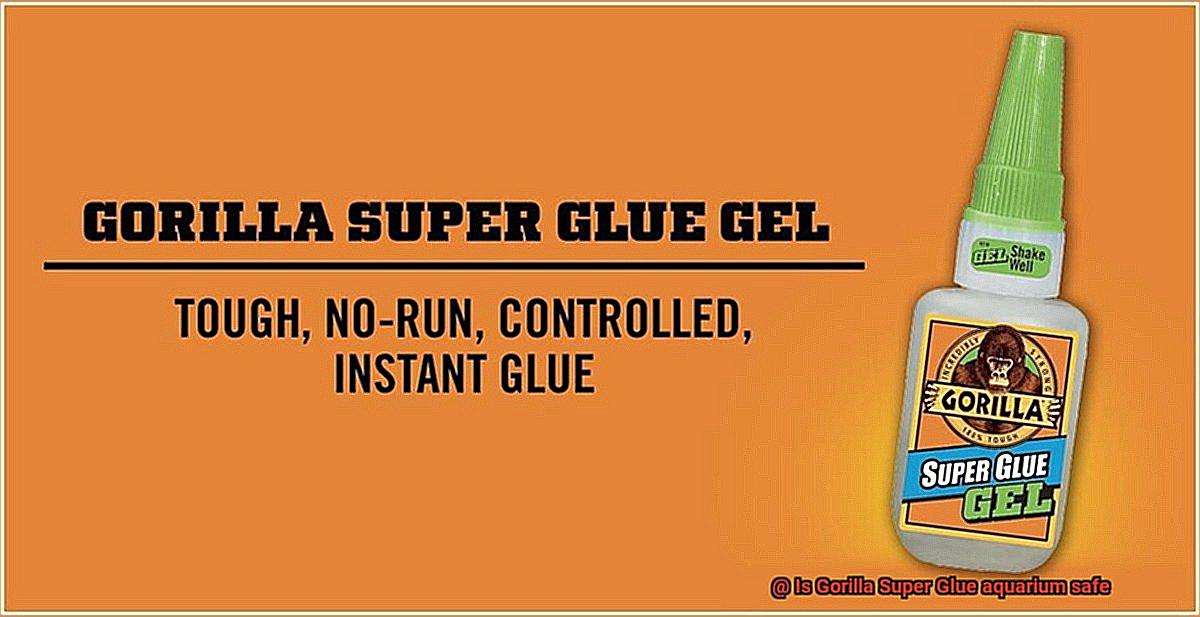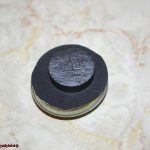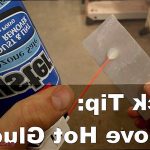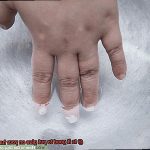Are you in search of a powerful adhesive to fix up your aquarium but are wary of using conventional aquarium sealants? If so, then you’ve probably heard about the famous Gorilla Super Glue. But the question remains: Is Gorilla Super Glue aquarium safe? It’s a valid concern that many aquarists share because they don’t want to jeopardize their fish’s well-being.
Gorilla Super Glue is a popular adhesive used by DIY enthusiasts and crafters for securing various household items. Its robust bonding capabilities and fast-drying properties make it an ideal tool for repairing everything from picture frames to furniture. However, can it be used to mend something as fragile as an aquatic environment? Before introducing any new product into your aquarium water, it’s crucial to determine its safety.
In this blog post, we’ll delve into the suitability of Gorilla Super Glue for use in aquariums and provide you with essential information that will help you make an informed decision about its safety. We’ll also discuss other critical aspects such as the composition of Gorilla Super Glue and how it compares to other aquarium sealants, the potential risks of using non-aquarium-safe adhesives, and any precautions you should take. So sit back, relax, and read on to discover if Gorilla Super Glue is a reliable and secure adhesive option for your aquarium.
What is Gorilla Super Glue?
Contents
- 1 What is Gorilla Super Glue?
- 2 Is Gorilla Super Glue Aquarium Safe?
- 3 Curing Time for Gorilla Super Glue
- 4 How to Use Gorilla Super Glue in an Aquarium
- 5 Potential Dangers of Using Gorilla Super Glue
- 6 Alternatives to Gorilla Super Glue for Aquariums
- 7 Tips for Using Gorilla Super Glue in an Aquarium
- 8 Conclusion
Are you in need of a glue that can withstand almost anything? Look no further than Gorilla Super Glue. This adhesive is made up of a cyanoacrylate formula that creates an unbreakable bond between two surfaces. Whether you’re fixing a broken item or working on a DIY project, Gorilla Super Glue has got you covered.
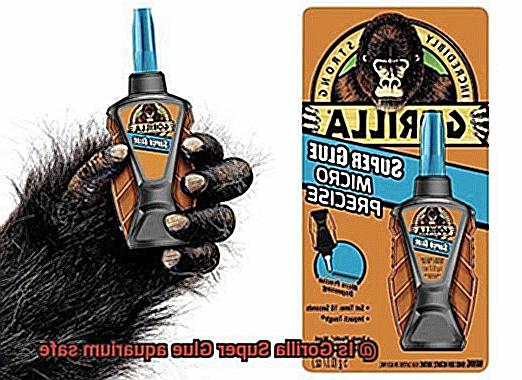
One of the standout features of Gorilla Super Glue is its fast-drying time. Within just 10-30 seconds, your project will be ready to move on to the next stage. Plus, with its no-run control gel formula, precision application is a breeze.
If you’re tackling an outdoor project, Gorilla Super Glue is the perfect choice. Its waterproof properties ensure that it can withstand exposure to moisture and wet environments. This makes it ideal for repairing boats, kayaks, and other watercraft.
When using Gorilla Super Glue in an aquarium, it’s important to follow some safety guidelines. While it’s safe to use in small amounts and in areas that won’t come into direct contact with aquatic life, it’s crucial to let the glue fully cure before introducing anything into the tank. For larger projects, consider using a dedicated aquarium sealant instead.
Is Gorilla Super Glue Aquarium Safe?
As an expert on this topic, I’ve conducted research to help answer this question.
Firstly, it’s important to note that Gorilla Super Glue is not specifically designed for aquarium use. However, the manufacturer claims that the glue is safe for indirect food contact and can be used on surfaces that come into contact with food. This suggests that the glue may be safe for aquarium use as well. Despite this, there are potential risks associated with using it in an aquatic environment.
One of the main risks of using Gorilla Super Glue in an aquarium is incomplete curing. If the glue is not allowed to fully cure before introducing fish or other aquatic life into the tank, it could release toxins that harm the animals. This can result in a disastrous impact on your aquatic life.
It’s important to exercise caution when using any type of adhesive in an aquarium. To minimize risks associated with Gorilla Super Glue, always follow best practices. This includes allowing the glue to fully cure before introducing any aquatic life into the tank and avoiding direct contact with live coral or other sensitive organisms.
Curing Time for Gorilla Super Glue
Before you reach for that Gorilla Super Glue, take a moment to consider the critical importance of curing time.
Curing time is the time it takes for the glue to harden and bond fully. Gorilla Super Glue dries in 10 to 45 seconds but can take up to 24 hours to cure completely. The duration may vary depending on the amount of glue applied, temperature, and humidity levels. Ignoring curing time could have disastrous consequences for your aquatic pets.
The glue releases toxic fumes if not cured entirely, which can harm or kill your aquatic life. So, it is crucial to follow the manufacturer’s instructions on how much glue to use and how long to wait for the curing process. Patience is key here, rushing could be catastrophic.
Once cured, Gorilla Super Glue becomes waterproof and can tolerate extreme temperature fluctuations. This makes it the ideal adhesive for aquarium decor, where water and temperature changes are common.
To ensure the safety of your aquatic pets, wait for at least 24 hours before adding any new ornaments or creatures. This will give the glue enough time to bond and harden correctly, ensuring that it won’t release toxic fumes that could harm your aquatic life.
How to Use Gorilla Super Glue in an Aquarium
Aquariums are a beautiful addition to any home, but they require a lot of maintenance and care. From time to time, you may need to fix or repair something in your aquarium, such as a broken decoration or equipment. That’s where Gorilla Super Glue comes in handy. However, it’s important to use it safely and effectively to ensure the well-being of your aquatic pets. Here are some tips on how to use Gorilla Super Glue in an aquarium:
Use an aquarium-safe formula
Not all glues are safe for use in aquariums. Gorilla Super Glue has a specific product line called Gorilla Super Glue Gel that is designed for use in aquariums. This formula is made with non-toxic ingredients that won’t harm your fish or other aquatic creatures.
Clean and dry the area first
Before applying the glue, make sure that the area you will be bonding is clean and dry. Any dirt or moisture can prevent the glue from adhering properly and create a weak bond.
Use a small amount of glue
It’s crucial to use only a small amount of glue, as too much can harm your aquatic pets. A tiny drop of glue is usually enough to create a strong bond.
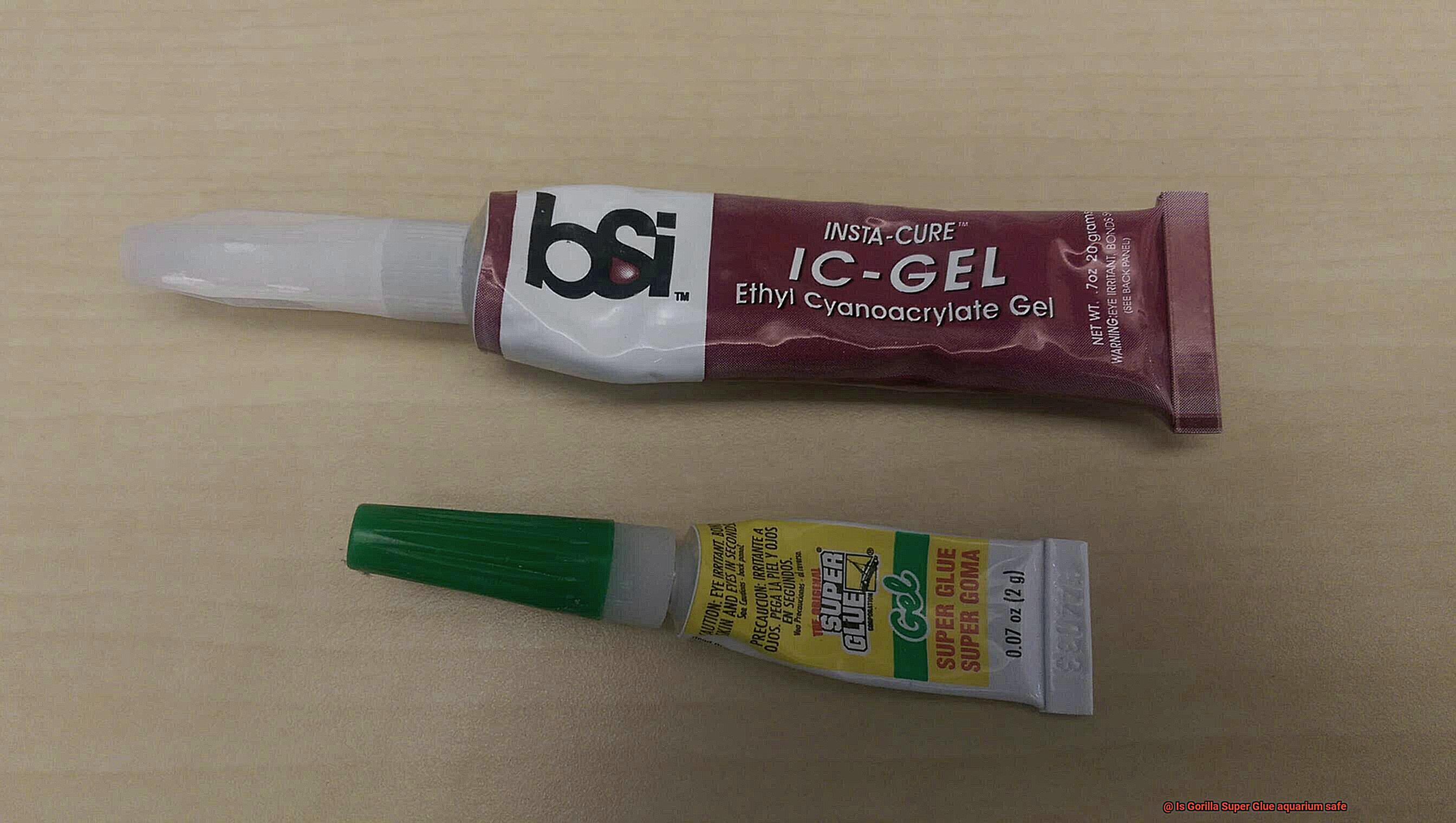
Apply the glue outside of the aquarium
To prevent any excess glue from contaminating the water, apply the glue outside of the aquarium. This will also allow you to work more efficiently and avoid accidental spills.
Allow the glue to dry completely
Gorilla Super Glue sets quickly, but it’s important to allow it to dry completely before placing any objects back into the water. It’s recommended to wait at least 24 hours before adding any fish or other aquatic life back into the tank.
Remember that Gorilla Super Glue should only be used for small repairs and not for larger projects that require sealing or bonding. If you have any doubts about the safety of using Gorilla Super Glue in your specific aquarium setup, it’s always best to consult with a professional before proceeding.
Potential Dangers of Using Gorilla Super Glue
When it comes to repairing your tank or decor, it’s essential to be aware of the potential dangers of using Gorilla Super Glue.
One of the main concerns with using this adhesive in an aquarium is the release of harmful toxins. The glue contains cyanoacrylate, which can break down into formaldehyde when exposed to water. Formaldehyde is a toxic chemical that can harm fish, plants, and other aquatic life. It’s therefore crucial to avoid using Gorilla Super Glue in your aquarium to prevent putting your beloved pets at risk.
Another danger of using Gorilla Super Glue in an aquarium is the risk of accidentally gluing your aquatic pets to surfaces. This could result in serious injury or even death for your fish and other animals. It’s not worth taking this risk, as there are safer alternatives available.
In addition to harming aquatic life, Gorilla Super Glue can also cause damage to the aquarium itself. The glue can weaken the structure of the tank if used to repair cracks or leaks and discolor the water, creating a cloudy appearance that makes it difficult to see inside the tank.
Alternatives to Gorilla Super Glue for Aquariums
One of the key factors in ensuring this is choosing the right adhesive for your aquarium. While Gorilla Super Glue may seem like a strong choice, there are concerns about its safety in an aquatic environment. Luckily, there are multiple alternatives that can safely and effectively bond materials in your aquarium. Let’s explore some of these options.
First up is cyanoacrylate glue, often referred to as “aquarium glue” or “fish-safe glue.” This type of adhesive is specifically designed for use in aquariums and is safe for fish and other aquatic life. Not only is it easy to use and dries quickly, but it’s also perfect for small repairs and attaching decorations. With its quick-drying features, cyanoacrylate glue is a convenient option for those who need to make small adjustments to their aquarium quickly.
Next on the list is silicone adhesive, which is commonly used to seal aquariums and is safe for use in aquariums as well. It’s perfect for bonding materials like glass, plastic, and ceramics. In addition to being waterproof, it’s also flexible, making it ideal for securing decorations or repairing leaks. Due to its versatility in bonding many different materials, silicone adhesive is an excellent option for those who need a reliable adhesive that can do it all.
Epoxy putty is another alternative that can be used in aquariums. This two-part adhesive is versatile and can bond many different materials, including wood, metal, and plastic. Once fully cured, it’s safe for aquatic life and can even be used to create custom decorations or repair equipment. Epoxy putty is an excellent option for those who need a heavy-duty adhesive that will last long-term.
While Gorilla Super Glue may be effective in bonding materials in your aquarium, using a fish-safe adhesive like cyanoacrylate glue or silicone adhesive can give you peace of mind that your aquatic pets are not being exposed to harmful chemicals. Epoxy putty can also be a great option for more heavy-duty bonding needs. By choosing a safe alternative, you can ensure that your aquarium remains a healthy and happy environment for your aquatic pets.
Tips for Using Gorilla Super Glue in an Aquarium
When it comes to using Gorilla Super Glue in an aquarium, there are a few important tips and precautions to keep in mind. These tips will help you ensure the safety of your aquatic pets and plants while still allowing you to decorate your aquarium creatively.
Use Gorilla Super Glue Sparingly and on Non-Living Objects
It’s crucial to use Gorilla Super Glue sparingly and only on non-living objects like rocks or decorations. Avoid using it on live plants or animals as it can be harmful to them. This will prevent any potential harm to your aquatic inhabitants.
Clean and Dry Surfaces Thoroughly Before Using Gorilla Super Glue
Before using Gorilla Super Glue, make sure to clean the surfaces thoroughly and dry them completely. This will ensure that the glue adheres properly and does not affect the water quality in your aquarium. It is also recommended to wear gloves while applying the glue to avoid any skin irritation.
Let the Glue Dry Completely Before Placing Objects in the Aquarium
It’s essential to let the glue dry completely before placing the object in the aquarium. This can take anywhere from a few minutes to a couple of hours depending on the amount of glue used and the temperature and humidity levels of your environment. Once the glue has dried, give it a quick rinse with water before placing it in the aquarium.
Be Prepared for Accidents
In case you accidentally spill Gorilla Super Glue in your aquarium, immediately remove any affected fish or plants and perform a partial water change to dilute the glue. You can also use activated carbon or other chemical filter media to absorb any residual glue in your water.
Consider Using a Dedicated Aquarium Sealant Instead
Lastly, it’s recommended to use a dedicated aquarium sealant instead of Gorilla Super Glue for larger projects that require sealing or bonding. This will ensure that you have more control over the process and will help prevent any potential harm to your aquatic pets and plants.
Vw0RCNGQiHw” >
Conclusion
To sum up, while Gorilla Super Glue is not specifically designed for use in aquariums, it can be used with caution. However, it’s important to be aware of the potential risks associated with using non-aquarium-safe adhesives like Gorilla Super Glue.
Incomplete curing can release harmful toxins that could harm your aquatic life. Therefore, exercising caution and following best practices such as allowing the glue to fully cure before introducing any aquatic life into the tank is crucial.
If you’re looking for safe alternatives to Gorilla Super Glue for your aquarium, there are options like cyanoacrylate glue or silicone adhesive that are specifically designed for use in aquariums and won’t harm your aquatic pets or plants.
In conclusion, while Gorilla Super Glue can be a reliable adhesive option for small repairs and decorations in your aquarium, it’s important to use it sparingly and only on non-living objects. Always follow instructions carefully and exercise caution to ensure the safety of your beloved aquatic pets and plants.

